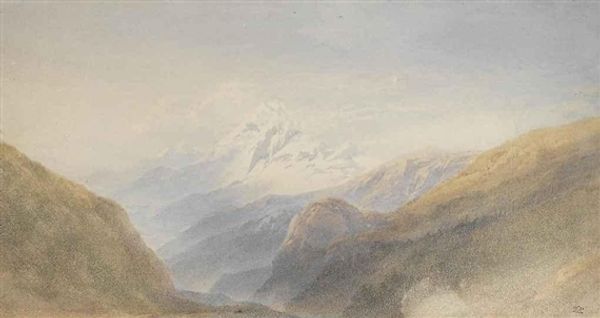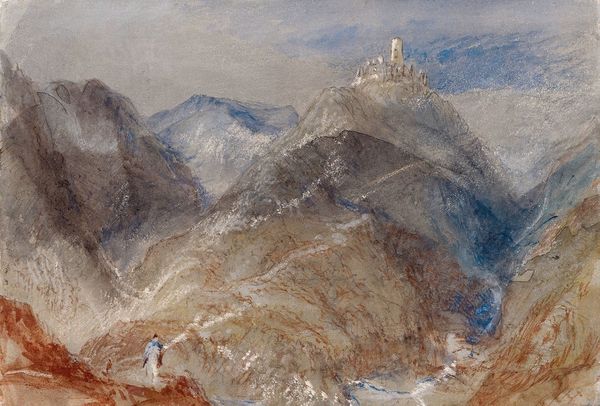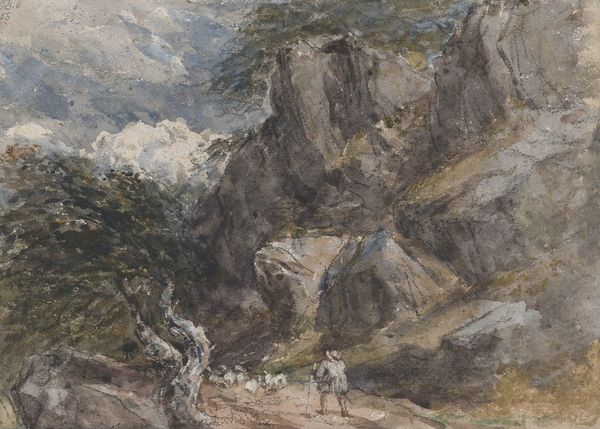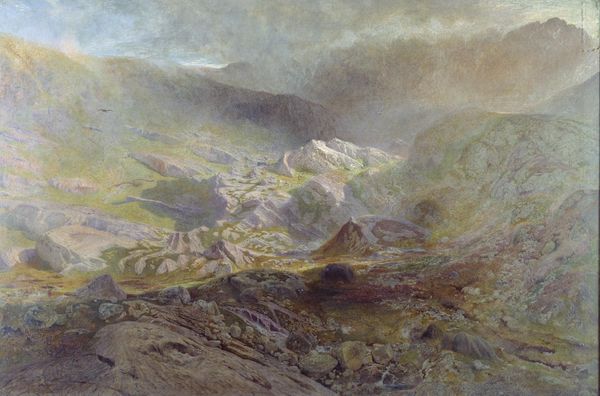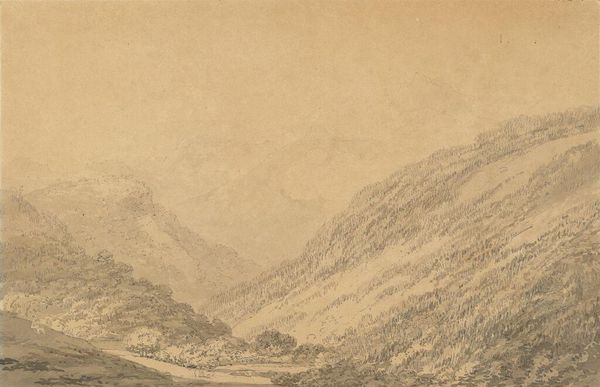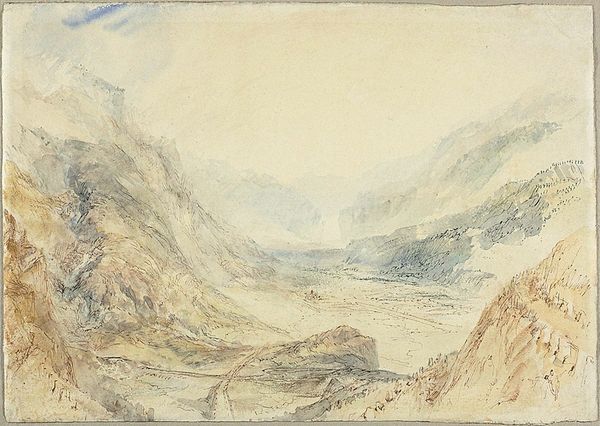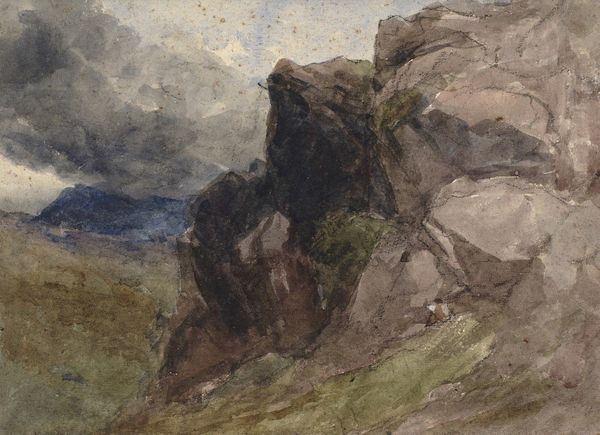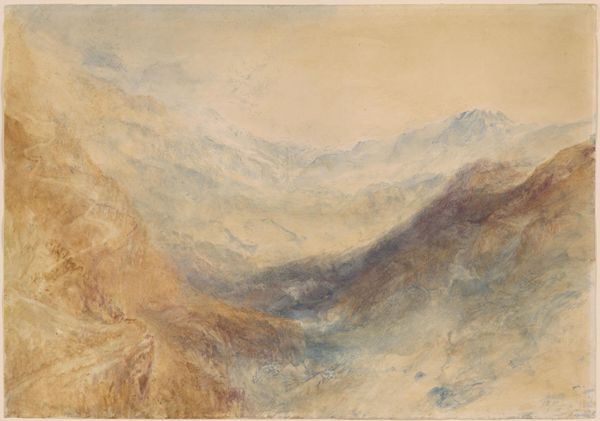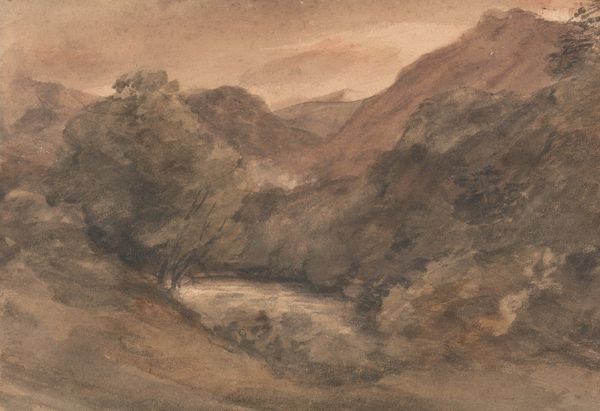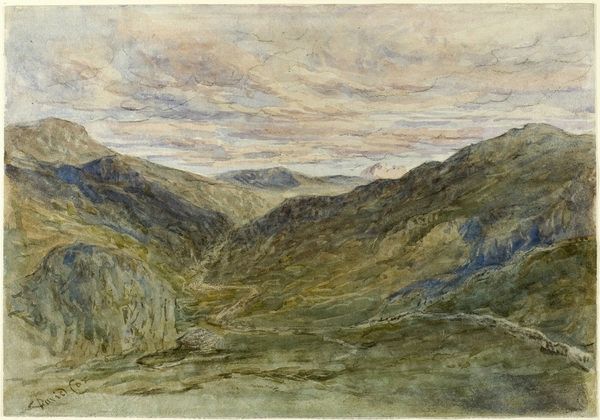
Copyright: Public Domain: Artvee
Editor: Here we have David Cox's "Penmanmawr" from 1855. It seems to be rendered in watercolor. I'm immediately struck by the somewhat imposing presence of the mountains and the rather muted palette. How do you interpret this work? Curator: What first arrests my attention is not merely the image of mountains but how Cox captures their silent, watchful presence. Mountains are often powerful cultural symbols. Across numerous cultures, mountains act as a place for revelation, spiritual transformation, the dwelling place of gods, ancestors, or sources of cultural knowledge. Do you see echoes of these symbolic meanings in this artwork? Editor: I didn't consider it like that. I was stuck on how imposing the mountain range seems, looming over what looks to be a rather small body of water, possibly the sea. I didn't immediately make the leap toward spiritual revelation. Curator: Consider how often light is rendered as something 'divine,' something to reach toward and be lifted up by. The somewhat faded rendering of light, though present, mutes this idea. Cox seems to evoke a more Romantic or even Realist feeling here. It is as though he wanted to draw attention to the natural power and beauty of nature while reminding us that enlightenment or transcendence might be hard to come by. Editor: That makes sense, especially with the somewhat muted colours and how rough and untamed the mountains look. So the mountain itself becomes a symbol not just of spirituality, but of the arduous path toward understanding? Curator: Precisely! And isn't it fascinating how such a relatively simple landscape painting can contain such layers of meaning once you begin to consider its symbolic vocabulary? Editor: It really is. I'll definitely look at landscape art with new eyes now.
Comments
No comments
Be the first to comment and join the conversation on the ultimate creative platform.


